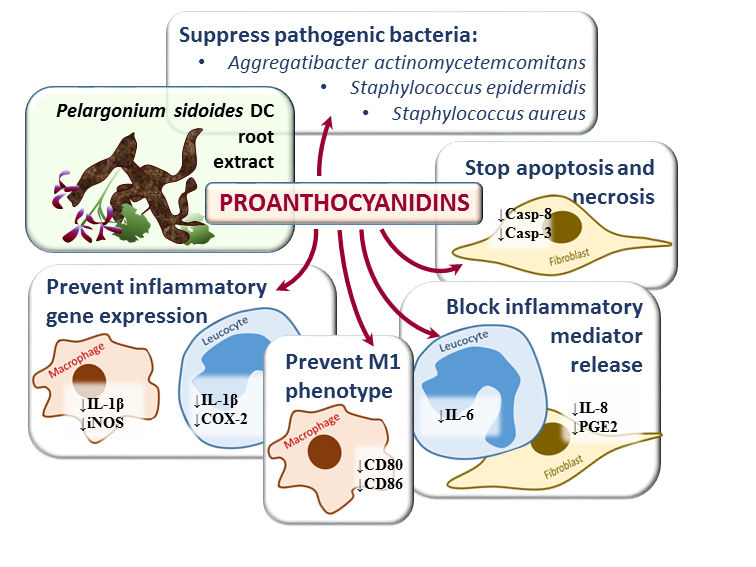The study explores antibacterial, antiinflammatory and cytoprotective capacity of Pelargonium sidoides DC root extract (PSRE) and proanthocyanidin fraction from PSRE (PACN) under conditions characteristic for periodontal disease. Following previous finding that PACN exerts stronger suppression of Porphyromonas gingivalis compared to the effect on commensal Streptococcus salivarius, the current work continues antibacterial investigation on Staphylococcus aureus, Staphylococcus epidermidis, Aggregatibacter actinomycetemcomitans and Escherichia coli. PSRE and PACN are also studied for their ability to prevent gingival fibroblast cell death in the presence of bacteria or bacterial lipopolysaccharide (LPS), to block LPS- or LPS+IFNγ-induced release of inflammatory mediators, gene expression and surface antigen presentation. Both PSRE and PACN were more efficient in suppressing Staphylococcus and Aggregatibacter compared to Escherichia, prevented A. actinomycetemcomitans- and LPS induced death of fibroblasts, decreased LPS-induced release of interleukin 8 and prostaglandin E2 from fibroblasts and IL-6 from leukocytes, blocked expression of IL-1β, iNOS, and surface presentation of CD80 and CD86 in LPS+IFNγ-treated macrophages, and IL-1β and COX-2 expression in LPS-treated leukocytes. None of the investigated substances affected either the level of secretion or expression of TNFα. In conclusion, PSRE, and especially PACN, possess strong antibacterial, antiinflammatory and gingival tissue protecting properties under periodontitis mimicking conditions and are suggestable candidates for treatment of the disease.

